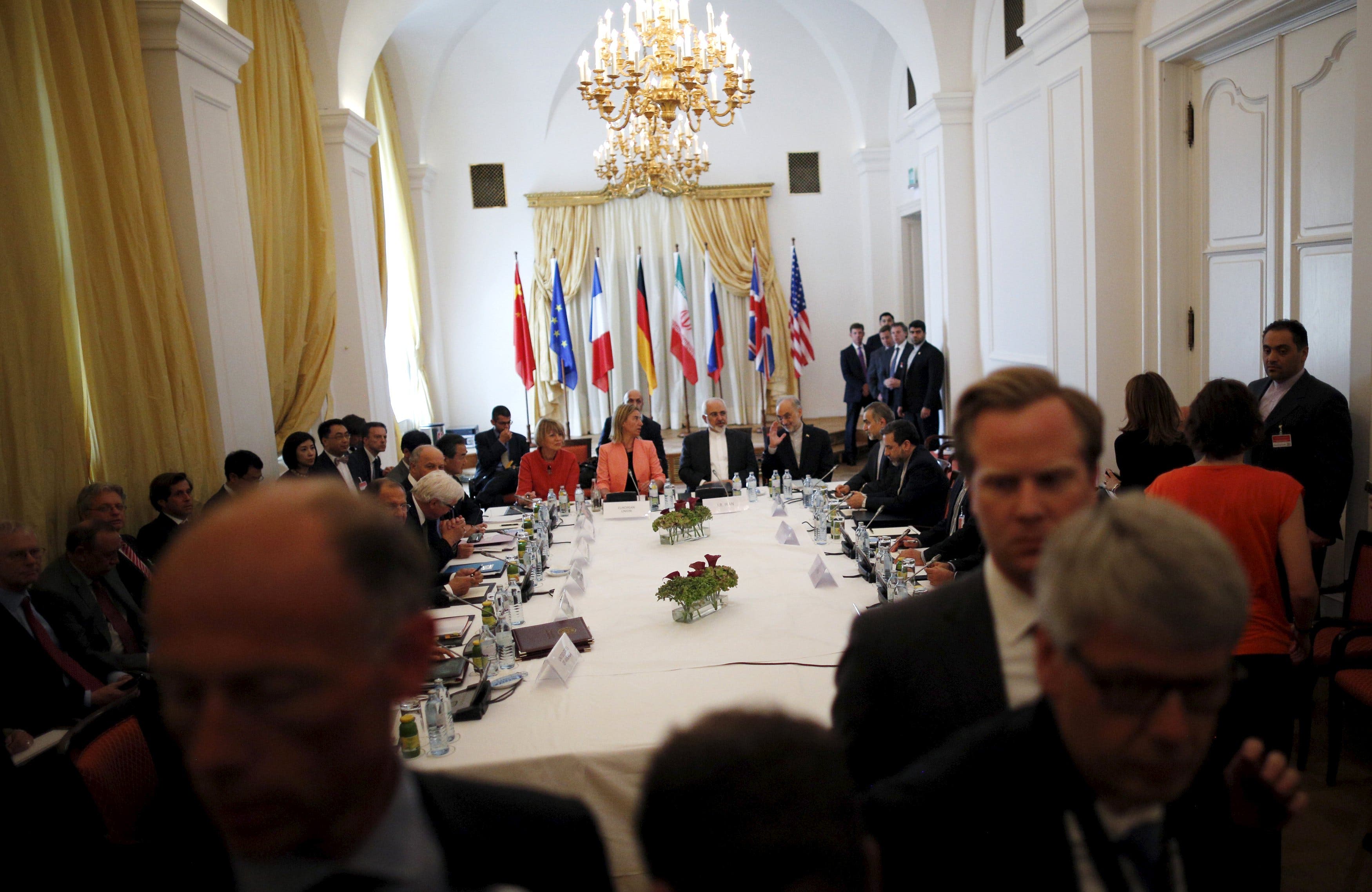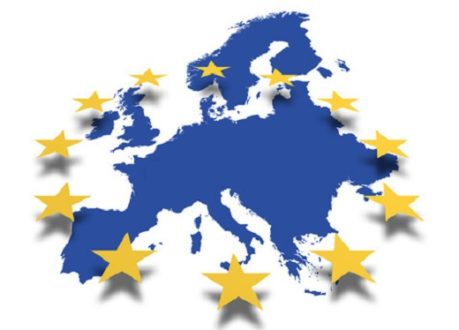Al-Aarbia – At this point in time, Europe is desperate to keep the Iran deal alive, even though Donald Trump has walked away from it, branding it “the single worst deal I’ve ever seen drawn up by anybody”.
But whatever efforts European leaders are making to keep the deal on track, European corporations such as the French oil company Total SA, the international shipping company A.P. Moller-Maersk, and the car manufacturer Peugeot, have all announced that they will pull out of Iran unless a sanctions waiver is obtained.
Besides plans being put on hold, other companies whose business interests include the manufacture of energy, healthcare and automobile products, have now announced they will cease operations in Iran in accordance with US Law.
These companies have stated that they will no longer deal with Iran, due to impending US sanctions, as it seems that when it comes to making deals with Iran, against keeping trade deals open with the US, the economic weight of the American market is much too important for them to ignore.
When a regime like Iran claims not to be seeking to build nuclear weapons, when in fact it has a proven track record for procuring parts with which to do so, as well as having an active ongoing program to build and test missiles capable of carrying nuclear devices, its claims fall into disrepute.
On top of this, Iran has also been proven to hide the most sensitive parts of both its nuclear and missile development programs in secret underground bunkers, some of which it will not allow IAEA monitors access to, none of which makes any sense if you have nothing to hide.
But what European leaders choose to ignore while pursuing to keep the Iran Deal up and running, is how President Hassan Rouhani – who while acting as chief negotiator during the 2003 to 2005 nuclear negotiations with European states, had reneged on the deal at the time – and negotiations had collapsed when it was proved that Iran was not serious about suspending all uranium enrichment and other nuclear activities, and was in fact accelerating the program.
 This Sunday, Oct. 11, 2015, picture claims to show the launching of an Emad long-range ballistic surface-to-surface missile in an undisclosed location. (Iranian Defense Ministry via AP)
This Sunday, Oct. 11, 2015, picture claims to show the launching of an Emad long-range ballistic surface-to-surface missile in an undisclosed location. (Iranian Defense Ministry via AP)
Leadership’s psyche
Building a nuclear bomb has become a part of the Iranian leadership’s psyche. Even before the revolution, when Dr Akbar Etemad was in charge of Mohammad Reza Pahlavi’s nuclear program, the option was always there to build a nuclear weapon, which no doubt the Shah would have achieved if he had remained in power.
But with the Shah deposed, Ayatollah Ruhollah Khomeini had swept to power, and within months, with the Iraqi leader Saddam Hussein sensing that the revolution had severely weakened Iran militarily, his troops invaded Iran on 22 September 1980.
By the time the war had ended on 20 August 1988, Iran had taken such a battering from Saddam’s Soviet-made Scud-B ground-to-ground missiles, with 160 missile attacks having struck urban areas, the population of Iran began to live in fear of a chemical attack.
Throughout the conflict, Khomeini had always vowed never to give in to the Iraqi onslaught, and he had personally sworn to continue fighting “with the last drop of blood in my body”. But as the war dragged on, it not only brought rumblings of discontent amongst the Iranian population, it also had a profound affect on the Iranian administration.
As the body count began to soar towards a million, with cities being obliterated by the withering rocket attacks, the Iranian people became weary of war, and Khomeini saw no other way out but to enter a truce with Saddam, while admitting in a statement how “making this decision was deadlier than drinking poison”.
Such was the humiliation signing this truce brought on Iran, after Khomeini died on 3 June 1989, and Ali Khamenei took over as Supreme Leader shortly after. The new spiritual leader was determined to strengthen Iran’s armed forces, with the aim of becoming the most powerful nation in the Middle East, which would ensure against any such humiliation ever happening again. This was at this time, the pursuit for nuclear weapons began in earnest.
At the point the regime has reached today, with billions of dollars having been impounded by the international community over Iran’s illegal pursuit of nuclear weapons, having been returned to it for its compliance to the Iran Deal, the race has sped up in its exporting revolution like never before, with Iran actively involved in conflicts such as Iraq, Syria, Morocco and Yemen, building up its aspirations of becoming the world’s leading military power.
But whether Iran’s administration is in the Iran Deal just as a short-term fix, or for the long haul deemed necessary to dramatically strengthen its power, its leadership is onto a winner. Because at the end of it all, not only will it have rebuilt its military with hi-tech weaponry, its boffins will also have gained enough time to complete its nuclear weapons.
European leaders should also realize that Iran has never stepped back from a war footing, as besides its underground facilities, the Guards have also constructed a vast network of military camps throughout the country, especially along its borders.
They have underground missile silos along the coast, to ensure they have the ability to protect the country against any form of threat, within its borders or outside, which also gives it the ability to strike out at nearby Gulf States should their nuclear facilities come under attack.
 Iranian Foreign Minister Zarif sits next to EU High Representative for Foreign Affairs and Security Policy Mogherini as they meet with foreign ministers at the hotel where the Iran nuclear talks meetings are being held in Vienna. (Reuters)
Iranian Foreign Minister Zarif sits next to EU High Representative for Foreign Affairs and Security Policy Mogherini as they meet with foreign ministers at the hotel where the Iran nuclear talks meetings are being held in Vienna. (Reuters)
Business opportunities
While wanting to secure lucrative business opportunities, by keeping the Iran Deal on track, European leaders should have been listening to the rantings of military leaders such as Mohammad Reza Naghdi, who in December 2016 forecast the collapse of the United States in less than 20 years, claiming that Trump’s policies were likely to speed up the process.
There was also the forecast of Khamenei’s top advisor Major Yahya Rahim Safavi, who in November of the same year, announced that the world was heading toward a global Islamic government, with its axis in Tehran.
There was also the 2017 statement from General Mohammad Ali Jafari, the Chief Commander of the Iranian Revolutionary Guards, who venting his anger over Trump’s intentions of reinstating tough sanctions, declared in a speech: “The Guards will consider the American military all over the world, especially in the Middle East as equal to ISIS”, and he also warned the US to remove its bases out of reach of Iranian missiles.
Bravado or not, these are the words of an enemy, and with European leaders wanting to stick with the Iran Deal, they are siding with an adversary of the United States. But as well as these provocative statements, there was yet another triumphant announcement coming from the leader of the IRGC Quds Force Maj. General Qassim Soleimani, who made threats to intervene in Bahrain and Yemen, in a declaration akin to a terror leader, soon after Aleppo had fallen to the Syrian regime with the aid of Russian and Iranian troops.
All of these statements need to be taken in context with the Iranian concept of velayat-e faqih, a perception of global dominance through installing an Islamic government, which has been set in Iranian ideology since Khomeini took power in 1979, and since that time, has been at the forefront of Iran’s ideology of exporting of revolution across the globe.
With velayat-e faqih put in place by Khomeini himself, it has become one of the main cornerstones of the Iranian regime, and it is this policy that has always been at the core of the Iranian regime’s concept of global hegemonic control.
Evidence of Iran’s continuance of hegemonic policy can be plainly seen in Yemen, where the regime is backing the Houthis, an anti-government guerrilla force that is fighting to bring down the country’s legitimate government that is hostile to Iran.
Not only is the Iranian regime supplying the Houthis with weapons to keep this vicious war ongoing, it is also supplying rockets for the guerrilla force to strike targets in Saudi Arabia.
Apart from this, there is also Iran’s interference in the dispute between Algeria and Morocco over the Western Sahara conflict, in which an anti-government pro-Hezbollah guerrilla force known as the Polisario Front, is fighting Morocco’s government forces to gain control of the Western Sahara.
To aid the Polisario in their fight, Iran has sent shipments of weapons, which include surface-to-air missiles, comprising of SAM9, SAM22 and Strela shoulder-launched missiles, to the Algerian-backed group. These weapons were sent via Iran’s Lebanese proxy Hezbollah, who is known to be training the Polisario in urban warfare at a military base in Tindouf, Algeria, where they are being taught how to operate ground-air rocket systems.
So, with all of this meddling coming from a country, it can only point to a covert nuclear program with which to deceive the world, and a plan of action, which any ongoing Iran Deal will help to finance, leaving European leaders drinking from the poison chalice of Trump’s enemies.
 Shabtabnews In this dark night, I have lost my way – Arise from a corner, oh you the star of guidance.
Shabtabnews In this dark night, I have lost my way – Arise from a corner, oh you the star of guidance.



